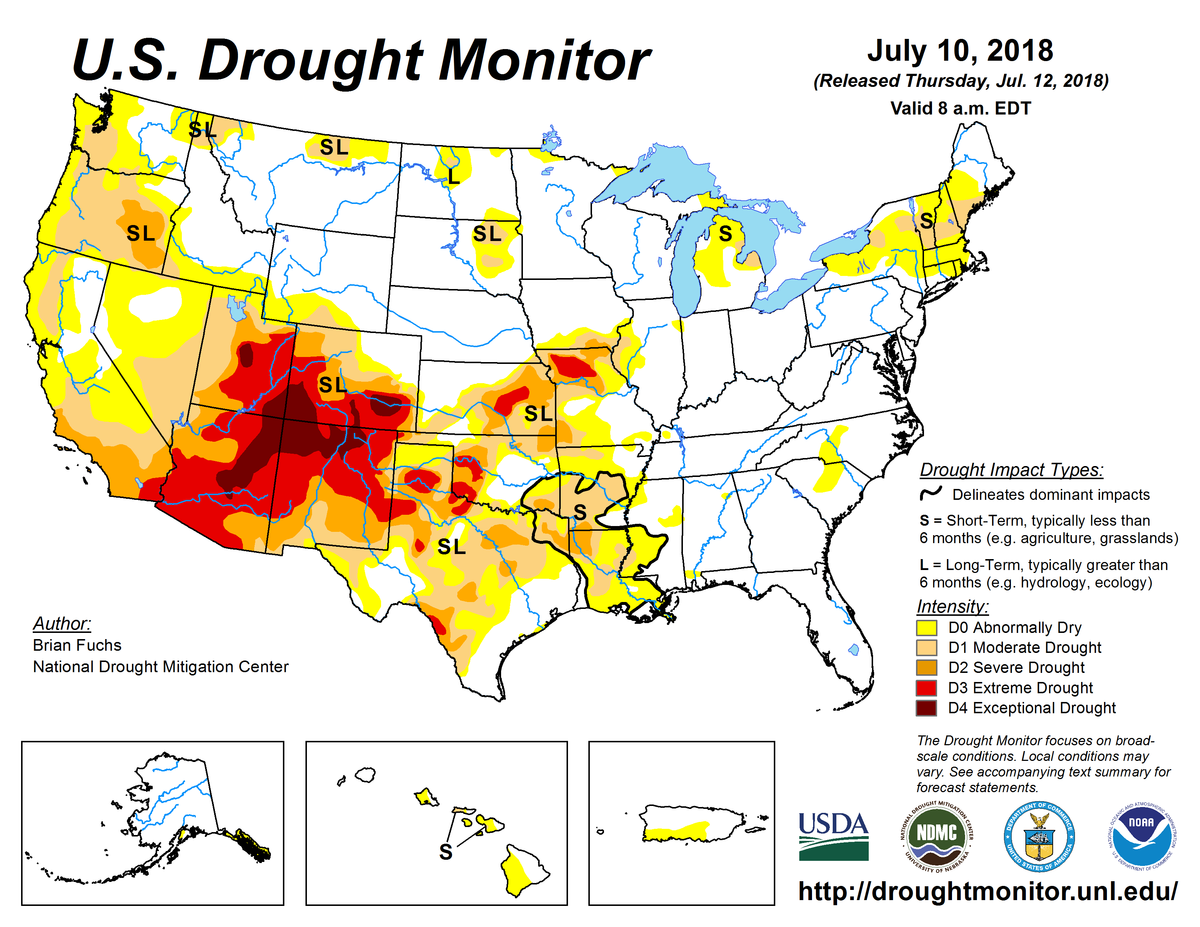
According to the July 10, 2018, U.S. Drought Monitor, moderate to exceptional drought covers 25.4% of the United States, an increase from last week’s 24.8%. Extreme and exceptional drought—the worst categories—also expanded to cover 7.4% of the nation, up from 7.0% last week.
A high pressure ridge dominated the circulation pattern across the contiguous United States during this U.S. Drought Monitor week. The ridge kept the main storm track to the north, with above-normal precipitation occurring in parts of the northern Plains as fronts and low pressure systems trekked along its northern edge into Canada. Low pressure troughs circulated around the southern edge of the high pressure ridge in the Gulf of Mexico. The troughs and summer convection brought above-normal precipitation to parts of the Gulf coast, while summer monsoon showers gave parts of the Southwest above-normal precipitation.
Meanwhile, Tropical Storm Chris hovered off the coast of the Carolinas. Cloudiness and rain associated with the troughs and Chris kept temperatures cooler than normal along the Gulf Coast and southern Atlantic Coast. Otherwise, the high pressure ridge kept temperatures warmer than normal and precipitation below normal for the rest of the Lower 48. Drought and abnormal dryness contracted in the parts of the Plains where above-normal rains fell, but expanded in many other parts of the country.
Abnormal dryness and drought are currently affecting over 119 million people across the United States—about 38.4% of the country’s population.

The full U.S. Drought Monitor weekly update is available from Drought.gov.
In addition to Drought.gov, you can find further information on the current drought as well as on this week’s Drought Monitor update at the National Drought Mitigation Center. See their recent news releases.
The most recent U.S. Drought Outlook is available from NOAA’s Climate Prediction Center and the U.S. Department of Agriculture provides information about the drought’s influence on crops and livestock.
For additional drought information, follow #DroughtMonitor on Facebook and Twitter.



